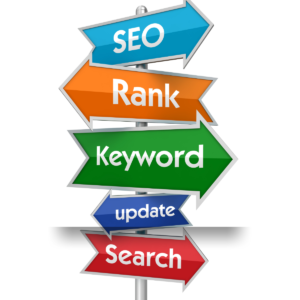
The Ultimate Solution for Busy Entrepreneurs

Struggling to manage your website while running your business? We've got you covered with a completely hands-off small business website for just $99 a month!
Ready to take the next step? Click here to schedule your 30-minute consultation and make your business life easier than ever.
When it comes to getting a website designed for your small business, pricing can be a major concern. At Host SMB, we specialize in creating websites specifically tailored to small businesses. In this article, we will provide you with valuable insights into the pricing structure for small business web design. Whether you are a new startup on a tight budget or an established company looking to revamp your online presence, understanding the various aspects and factors that contribute to web design pricing will help you make informed decisions and ensure you get the best bang for your buck. So, let’s dive right in and explore the realm of small business web design pricing!
Understanding Small Business Web Design Pricing
When it comes to web design for small businesses, pricing can vary greatly depending on a variety of factors. It’s important to understand the basics of website pricing, compare costs and benefits, and consider the factors that influence the overall cost. Additionally, it’s helpful to explore different pricing models and weigh the pros and cons of self-build platforms versus professional web design. This article aims to provide comprehensive information on small business web design pricing, enabling you to make informed decisions for your business.
The basics of website pricing
Website pricing typically encompasses various components, including design, development, maintenance, and additional features such as e-commerce functionality. It’s essential to understand what you’re paying for and how each aspect contributes to the overall cost. Web design pricing can range from a few hundred dollars to several thousand dollars, depending on the complexity and scope of the project.
Transform Your Business, Transform Your Life

Why Choose Host SMB Limited?
World-Class Design Meets Functionality
We don't just build websites; we create experiences. Our team of seasoned professionals designs custom, responsive websites optimized for both mobile and desktop. Your small business is unique; your website should be too. We have packages starting at $99 a month for all of your website needs taken care of.SEO Ready and Built for Growth
A beautiful website is just a start. We lay the foundation for your online success by implementing proven SEO strategies that make your site easily discoverable.Comparing small business website costs and benefits
When evaluating the cost of a small business website, it’s crucial to consider the associated benefits. A well-designed and functional website can greatly enhance your online presence, attract more customers, and ultimately contribute to the growth of your business. The cost of a website should be viewed as an investment rather than an expense. By comparing the costs and benefits, you can make an informed decision that aligns with your business goals and budget.
Factors affecting the cost of a small business website
Several factors influence the cost of designing a website for a small business. Understanding these factors can help you estimate and plan for the expenses involved. The complexity and design of the website, the number of pages, the custom functionality and features required, and the extent of content creation are key elements that can drive up the cost. By considering these factors, you can work with web designers to find solutions that meet your needs and budget.
Different Types of Website Design Pricing Models
Small business web design pricing commonly follows four main pricing models: fixed or set price, hourly, retainer or contract-based, and project-based. Each model has its advantages and disadvantages, and understanding them can help you choose the pricing model that best suits your business needs.
Fixed or set price model
The fixed or set price model involves establishing a predetermined price for the entire web design project. This pricing model provides clarity and helps you budget accordingly. However, it may not be suitable for projects with uncertain timelines or evolving requirements.
Hourly pricing model
With the hourly pricing model, web designers charge an agreed-upon hourly rate for their services. This model can be advantageous if the project scope is unclear initially or if changes and updates are expected throughout the design process. However, it’s essential to establish a clear understanding of the estimated number of hours required to avoid unexpected costs.
Retainer or contract-based model
In the retainer or contract-based model, small businesses engage web designers on an ongoing basis. This model ensures dedicated availability and support, often at a fixed monthly or yearly fee. It can be beneficial for businesses that require continuous updates and maintenance services. However, it may not be cost-effective for businesses with infrequent update needs.
Project-based pricing model
The project-based pricing model is characterized by charging a fixed price for each specific project or task within a web design project. This approach allows for flexibility and enables businesses to tackle individual components or phases of the website design at their own pace. However, it requires effective project management to ensure timely completion and avoid scope creep.
Self-Build Platforms vs. Professional Web Design
Small business owners often face the choice between using self-build website platforms and hiring professional web designers. While self-build platforms may offer cost advantages and convenience, professional web design brings expertise, customization options, and a polished end product. It’s crucial to weigh the pros and cons of each option before making a decision.
Cost comparison
Self-build platforms such as WordPress or Wix can seem appealing due to their lower upfront costs. These platforms often offer subscription models with various tiers, enabling businesses to choose features and functionality based on their needs and budget. On the other hand, professional web design may involve higher upfront costs but can provide a more tailored and comprehensive solution in the long run.
Efficiency and convenience
Self-build platforms are designed to be user-friendly and accessible to those without technical expertise. They often provide pre-designed templates and drag-and-drop editors, making it relatively easy to create a basic website. However, this convenience may come at the expense of customization options and design flexibility. Professional web design, while requiring more involvement, can yield a website that truly represents your business and brand.
Advantages and disadvantages
Self-build platforms can be advantageous for small businesses looking for a simple and budget-friendly option. They allow for quick implementation and easy updates. However, they may lack advanced features and may not be suitable for businesses with complex requirements. Professional web design offers expertise, customization, and scalability. However, it often comes with a higher price tag and requires collaboration with designers to bring your vision to life.
Factors That Determine The Cost of Designing a Website
Several factors impact the cost of designing a website for a small business. Understanding these factors can assist in estimating the expenses involved and making informed decisions about your website design project.
Website complexity and design
The complexity and design of a website play a significant role in determining its cost. A simple website with a few pages and basic functionality will generally cost less than a complex e-commerce site with numerous unique features and integrations. The level of customization, responsive design, and visual elements can also influence the overall cost.
Number of pages
The number of pages required for your website affects the cost, as each page involves design and development efforts. A small business website typically includes essential pages such as a homepage, about us, services or products, contact, and potentially blog or portfolio pages. The more pages you require, the more time and resources will be needed, resulting in higher costs.
Custom functionality and features
Custom functionality and features beyond basic navigation and content display can significantly impact the cost of a website. These may include e-commerce capabilities, booking systems, interactive elements, user login portals, and more. The complexity and development time required for these features will influence the overall cost.
Content creation
Content creation involves crafting written, visual, and multimedia elements for your website. It may include copywriting, graphic design, photography, video production, or other media assets. The amount and quality of content needed can affect the overall cost of the website. Professional content creation services generally come at an additional cost but can greatly enhance the effectiveness and professionalism of your site.
The Cost of Website Planning and Strategy
Before diving into the design and development process, it’s crucial to allocate time and resources for website planning and strategy. This stage helps define the foundation and direction of your website, ensuring it aligns with your business objectives and target audience.
Market research
Market research helps identify your target audience, understand their needs and preferences, and gain insights into your competition. This process involves analyzing market trends, conducting surveys or interviews, and studying industry benchmarks. While market research may not have a direct cost impact, it is an essential aspect of website planning that contributes to overall success.
Website architecture planning
Website architecture planning involves determining the structure, layout, and flow of your website. It includes creating a sitemap, navigation design, and wireframes to visualize the user experience. This planning stage helps identify the required functionality and features, providing a blueprint for the design and development process. The time and expertise required for this planning stage will contribute to the overall cost.
Brand strategy alignment
Aligning your website with your brand strategy ensures consistency and strengthens your overall brand identity. This stage involves incorporating your brand guidelines, logo, color scheme, and tone of voice into the website design. Brand strategy alignment may require graphic design work, content creation, and collaboration with the web design team. While it may entail additional costs, it plays a crucial role in building a strong and cohesive brand presence online.
Design and Development Pricing
The cost of designing and developing a website encompasses various aspects, from graphic and web design to development and coding to website testing and quality assurance (QA).
Graphic and web design costs
Graphic and web design costs encompass the creation of visual elements and the overall aesthetic of the website. This may include designing the logo, layout, color scheme, typography, and other branding assets. The complexity and customization level required will affect the pricing for graphic and web design services.
Development and coding costs
Development and coding costs cover the technical implementation of the web design. This involves translating the design into code and creating the functional elements of the website. The complexity of the required functionality, the programming languages involved, and the extent of customization will influence the development and coding costs.
Website testing and QA costs
Website testing and quality assurance (QA) are crucial steps in ensuring that your website functions smoothly, is user-friendly, and is compatible with various devices and browsers. Testing involves checking for bugs, broken links, responsiveness issues, and overall usability. The time and effort invested in thorough testing and QA contribute to the overall cost of the website.
Maintenance Costs of a Small Business Website
After the initial design and development phase, ongoing maintenance is essential to keep your website up to date, secure, and functioning optimally.
Regular updates
Regular updates involve making content changes, adding new pages or features, and ensuring that your website remains relevant and engaging. These updates may be handled by your web design team, or you may choose to manage them yourself through a content management system (CMS). The time and frequency of updates will impact the overall maintenance costs.
Security maintenance
Keeping your website secure is crucial to protect your business and your customers’ data. Security maintenance involves implementing security measures, regularly updating software and plugins, and monitoring for potential vulnerabilities. This aspect of maintenance typically requires ongoing efforts and possibly additional security tools or services, which contribute to the overall cost.
Website backups and restoration
Regular backups of your website’s files and databases are essential to safeguard against data loss or potential website crashes. In the event of a technical issue or cyber attack, having reliable backups enables quick restoration of your website. Depending on the backup frequency and storage options, this aspect of maintenance may have associated costs.
Additional Costs to Keep in Mind
In addition to the core website design and maintenance costs, there are several other expenses that small businesses should consider when planning their web design budget.
Website hosting and domain
Website hosting involves storing your website’s files and making them accessible to visitors. Domain registration is the process of acquiring a unique website address (e.g., www.yourbusiness.com). These services typically incur monthly or annual fees, which vary based on factors such as storage space, bandwidth, and the chosen domain name.
SSL certificate
An SSL certificate is a security measure that encrypts the communication between your website and its visitors, ensuring data privacy and preventing malicious attacks. While essential for all websites, SSL certificates generally involve additional costs, either as a one-time purchase or an annual fee.
Website analytics and SEO tools
Tracking your website’s performance through analytics tools can provide valuable insights into visitor behavior, traffic sources, and other key metrics. SEO (search engine optimization) tools help optimize your website for search engine rankings and visibility. These tools may be available at various price points, depending on their features and level of sophistication.
How to Save Money on Small Business Web Design
While investing in professional web design can yield significant benefits, small businesses may seek cost-saving strategies. Here are a few tips to help you save money on small business web design while still achieving a high-quality result:
Opting for template-based designs
Using pre-designed templates can be more cost-effective compared to custom designs. Many website builders and content management systems offer a wide range of templates that can be customized to match your brand. While templates may lack some uniqueness, they provide a good starting point that can be tailored to your needs.
Recycling and repurposing content
If you already have existing content, consider repurposing and adapting it for your new website. Utilize photos, videos, and written materials that accurately represent your business and brand. This can save both time and money on content creation.
Investing in in-house web design training
If you have the resources available, providing web design training to your in-house team can be a cost-saving measure. Having individuals with the necessary skills and knowledge on your team can potentially reduce the need for external design services, especially for smaller updates and maintenance tasks.
Wrap Up: Finding the Right Balance in Web Design Pricing
When it comes to small business web design pricing, it’s essential to understand the value a well-designed website can bring to your business. While cost considerations are crucial, it’s equally important to prioritize quality, functionality, and user experience. By understanding the factors that influence pricing, exploring different pricing models, and weighing the advantages and disadvantages of self-build platforms and professional web design, you can find the right balance that aligns with your business goals and budget. Ultimately, negotiating a fair price with web designers and investing in a website that meets your specific needs will contribute to the success of your small business.
Unlock the Future of Easy Business Management

Are you overwhelmed by website management tasks? Say no more. Experience the luxury of a hands-off small business website for just $99 a month!
Why wait? Click here to book your 30-minute consultation and simplify your business operations like never before.


